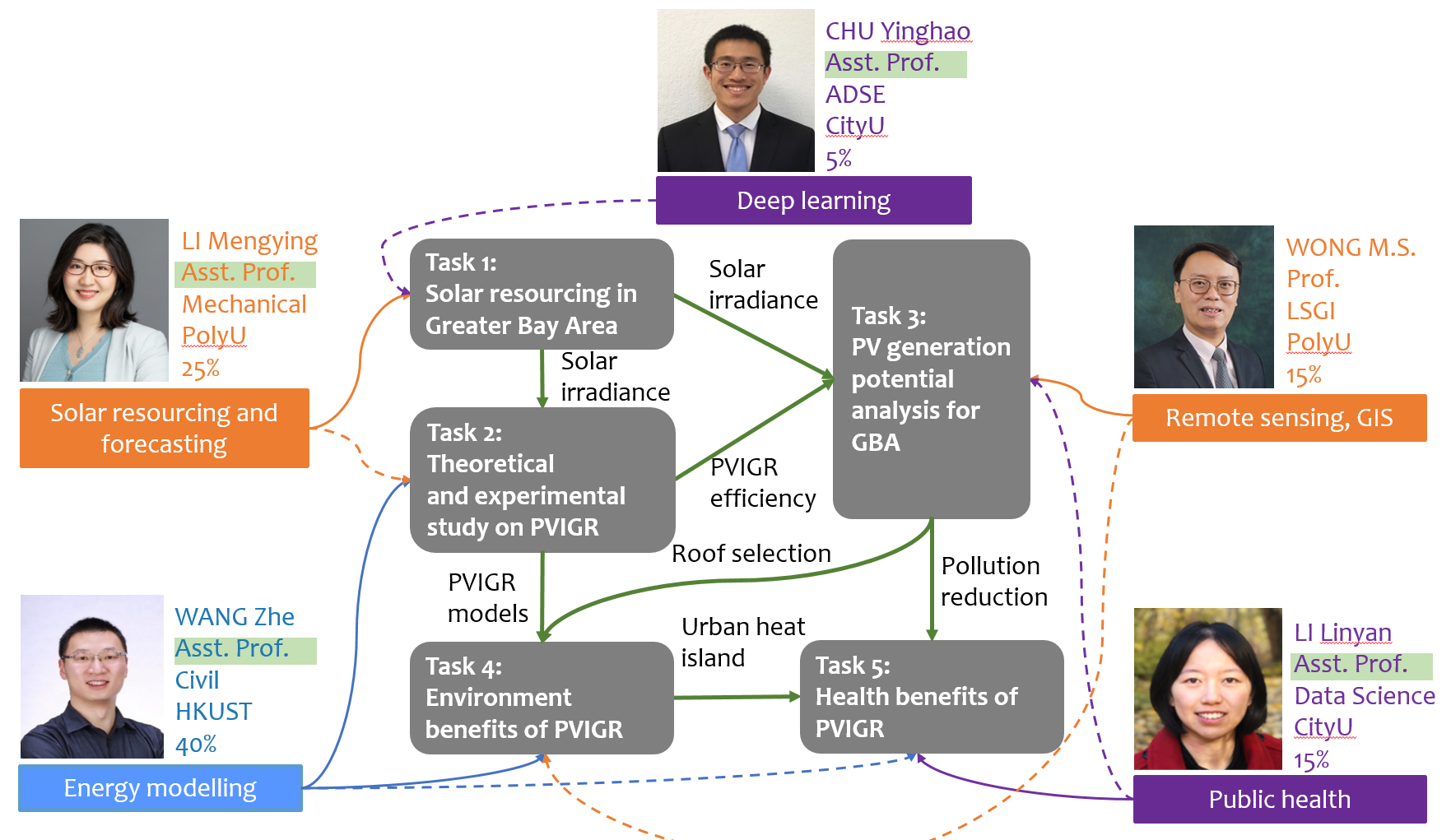Toward 2060 Carbon Neutrality: Life-cycle Planning and Design of Photovoltaic Integrated Green Roof (PVIGR) Systems for Hong Kong and the Greater Bay Area
Funding agency
Hong Kong Research Grant Committee, Collaborative Research Fund, C6003-22Y, 2023-2026
Project introduction
To achieve the carbon neutrality goal, electricity generation from renewables needs to be substantially increased. The photovoltaic integrated green roof (PVIGR), where PV panel is placed over green roof, is an emerging and promising technology that is especially suitable for densely populated cities with a hot and humid weather condition, such as Hong Kong and other mega-cities in GBA, because of its dual carbon emission reduction, synergy between PV and green roof, and other environmental benefits.
However, since the first study on PVIGR published in 2007, there are few PVIGR projects constructed worldwide, due to two major barriers: lack of location-specific design guide and high initial costs. To overcome the barriers and promote PVIGR in GBA, there are three research gaps need to be filled: a) reliable solar irradiance database and/or resourcing models for Plane-or-array Irradiance (POA) and its long-term predictions; b) analytical and experimental study on PVIGR’s performance and thermal behavior; c) accurate estimation about the life-cycle benefits and costs of PVIGR. To address those three research gaps and to promote the adoption of PVIGR in the GBA, we formed a team with seven researchers from three universities with diverse but complementary and relevant expertise to work on this inter-disciplinary project.
To overcome the first barrier, we plan to develop a first-of-its-kind location-specific optimized PVIGR design toolkit in GBA. We first plan to develop a new model to assess spectral POA resources based on remote sensing, radiative modelling, and deep learning techniques (Task I); and then develop new heat and mass transfer model to investigate the thermal interactions among PV, green roof, building, and local micro-climate, which will be validated by experimental data (Task II). Based on the solar resourcing results, we will develop a web-based PV/PVIGR generation potential map that can help select the suitable roof space for PVIGR, and decide the optimal PV installation capacity (Task III). Based on the analytical and experimental study on PVIGR, we will develop a design guideline to inform the optimized installation specifics of PVIGR.
To overcome the second barrier, we plan to quantify the life cycle costs and benefits of PVIGR through city-scale building energy and CFD simulation (Task IV), and data-driven public health analysis (Task V). The comprehensive analysis on the long-term co-benefits of PVIGR can help decision makers to develop proper financial incentives to internalize positive externalities of PVIGR, and to address its high initial cost.

